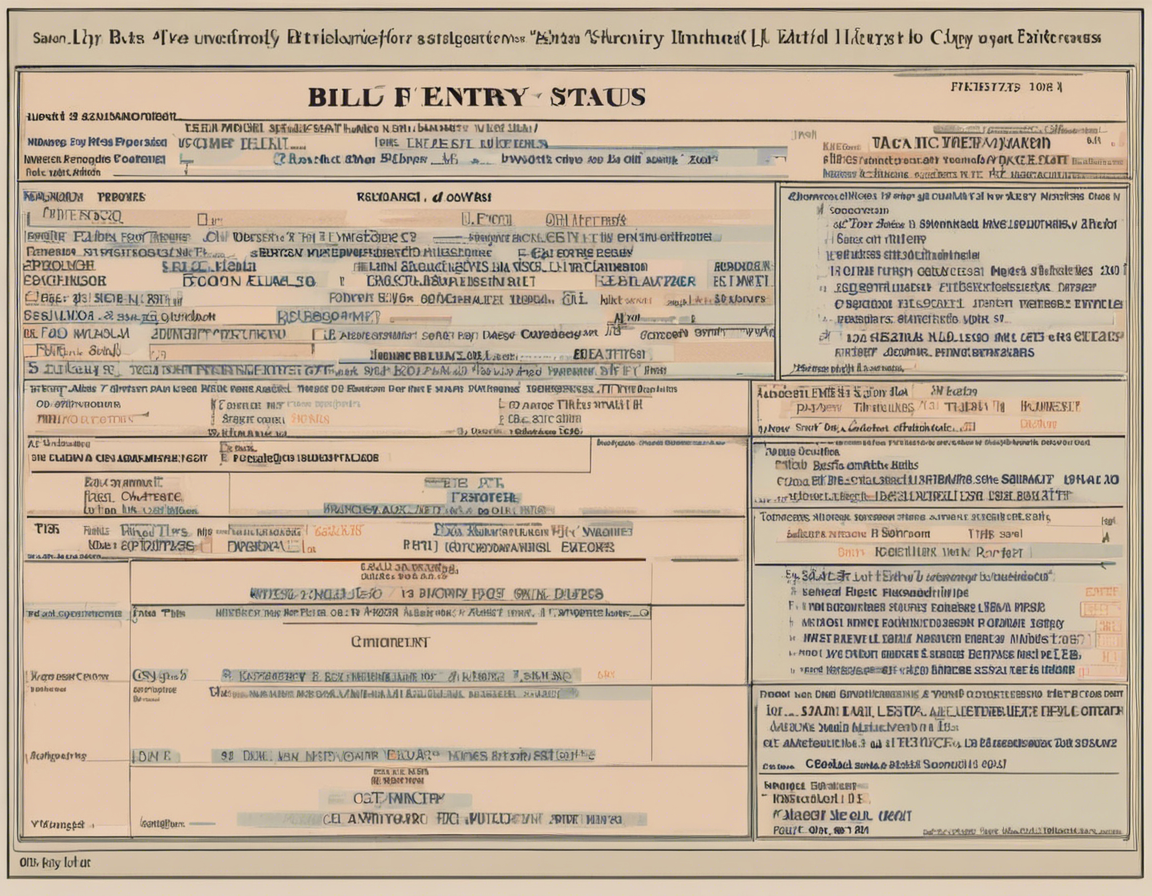When importing goods into a country, one of the key documents that plays a significant role in the customs clearance process is the Bill of Entry. It is an official document submitted by importers or customs brokers to the customs department for the clearance of imported goods. The Bill of Entry contains important details such as the description of goods, their value, quantity, and other necessary information required by customs authorities.
What is a Bill of Entry Status?
The Bill of Entry Status refers to the current stage of processing that a particular Bill of Entry has reached within the customs clearance system. It indicates whether the customs authorities have accepted, processed, or have any issues with the submitted Bill of Entry.
Understanding the Bill of Entry Statuses
-
Accepted: This status means that the customs department has accepted the Bill of Entry for processing.
-
Under Examination: If the Bill of Entry is marked as “Under Examination,” it implies that customs officials are inspecting the goods or verifying the information provided in the document.
-
Cleared: When the Bill of Entry is marked as “Cleared,” it signifies that the customs clearance process is complete, and the goods are ready for delivery or further transportation.
-
Hold: If the Bill of Entry status shows as “Hold,” it indicates that there is some issue or discrepancy with the document or the goods, which needs to be resolved before clearance can be granted.
-
Further Assessment: This status suggests that additional assessment or valuation of the goods is required before the customs clearance process can be finalized.
Importance of Monitoring the Bill of Entry Status
Monitoring the Bill of Entry Status is crucial for importers and customs brokers to ensure a smooth and timely clearance process. By tracking the status of the Bill of Entry, they can:
- Identify any potential delays or issues in advance and take necessary actions to resolve them promptly.
- Plan for the arrival and delivery of goods based on the clearance status.
- Maintain compliance with customs regulations and avoid penalties or additional charges.
Common Reasons for Delay in Bill of Entry Processing
-
Incomplete Documentation: Missing or incorrect information in the Bill of Entry can lead to delays in processing.
-
Customs Examination: Random checks or suspicions by customs officials can prolong the clearance process.
-
Discrepancies in Valuation: Differences in the declared value of goods and their actual worth can trigger further assessment and delay clearance.
-
Regulatory Changes: Changes in import regulations or duty rates can impact the processing time of Bill of Entry.
Tips to Expedite Bill of Entry Processing
-
Ensure Accuracy: Double-check all information provided in the Bill of Entry to avoid errors or discrepancies.
-
Submit Documents Early: Submit all required documents well in advance to allow ample time for processing.
-
Communicate Effectively: Maintain open communication with customs officials to address any queries or concerns promptly.
-
Use Technology: Explore online customs clearance platforms or software for quicker processing and tracking of Bill of Entry.
Frequently Asked Questions (FAQs)
Q1: What is the difference between a Bill of Entry and a Shipping Bill?
A: A Bill of Entry is a customs document submitted by importers for the clearance of imported goods, while a Shipping Bill is a document submitted by exporters to customs for the shipment of goods.
Q2: Can the Bill of Entry Status be checked online?
A: Yes, many customs departments provide online portals where importers and customs brokers can track the status of their Bill of Entry.
Q3: What should I do if my Bill of Entry is on hold?
A: Contact your customs broker or the relevant customs department to resolve any issues causing the hold status on your Bill of Entry.
Q4: How long does it typically take to process a Bill of Entry?
A: The processing time can vary depending on factors such as the complexity of goods, documentation, customs workload, and any potential delays.
Q5: What happens if there are discrepancies in the Bill of Entry information?
A: Discrepancies may lead to further examination or assessment by customs officials to ensure accurate valuation and compliance with regulations.
In conclusion, understanding the Bill of Entry Status is essential for importers and customs brokers to ensure a seamless customs clearance process. By monitoring the status, addressing potential delays proactively, and following best practices, importers can streamline the import process and avoid compliance issues.
